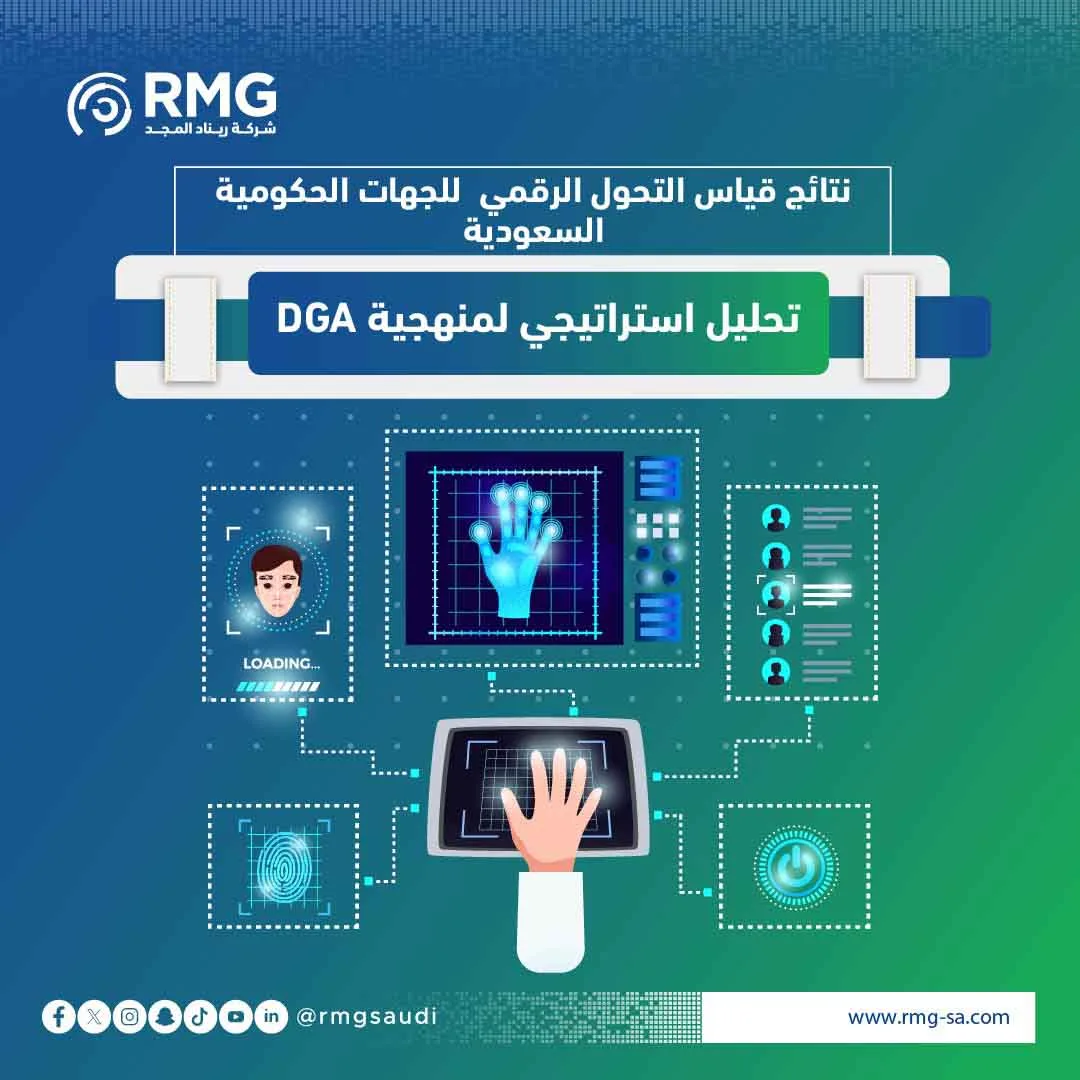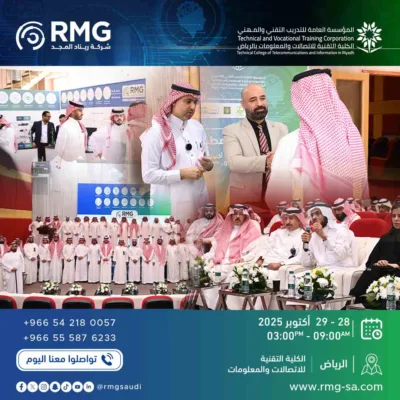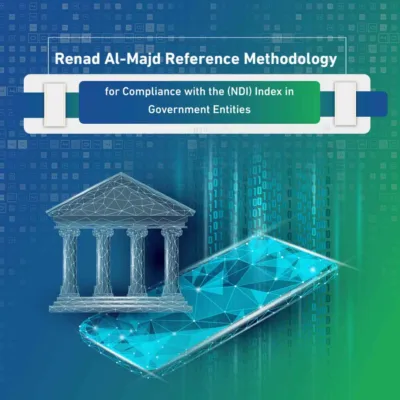Blog Body
Discover an in-depth analysis of the results of measuring the digital transformation of Saudi government entities. We cover the updated Digital Government Authority (DGA) standards, the economic impact, and the steps to excel in measurement.
Digital transformation in Saudi Arabia… From Planning to Sustainable Impact within Vision 2030
Digital transformation is no longer just a technical option or a recreational process within government institutions in the Kingdom of Saudi Arabia, but has become a key pillar and a mandatory act to achieve the goals of the Kingdom’s ambitious Vision 2030. The importance of this transformation is particularly embodied in the theme of “Enhancing Government Effectiveness”, which aims to build a resilient and responsive government apparatus.
In this context, the Digital Transformation Measurement (Qiyas), overseen by the Digital Government Authority (DGA), stands out as a strategic tool to ensure accountability and achieve excellence. Measuring digital transformation is a systematic assessment process designed specifically for government entities to diagnose their current situation and follow the evolution of their digital journey. Therefore, the results of the digital transformation measurement announced annually by the Authority do not represent mere technical performance reports, but constitute a mandatory roadmap for evaluating performance and improving the quality of services.
The Authority’s focus on “raising the level of compliance of government entities with orders and decisions” indicates that the measurement process goes beyond the purely technical aspect, as it is a governance and transparency tool. The announcement of the results of the measurement of digital transformation periodically is a transparent report to stakeholders on the extent to which the government entity is committed to its national commitments in the field of digitalization.
Understanding the Framework: The Digital Transformation Measurement Methodology (Qiyas) and its Ten Pillars
The Digital Government Authority (DGA) represents the official authority and the highest regulatory framework for digital government work in the Kingdom. The Digital Transformation Results Measurement Methodology applies to all government entities and entities that contribute to the work of digital government or benefit from national platforms.
The methodology for measuring digital transformation is comprehensive and accurate, as its structure consists of an integrated system to evaluate all aspects of the digital journey of entities. In the 2024 measurement, the index consisted of 10 perspectives, 23 axes, and 96 criteria, all of which are used to measure the extent to which entities adhere to basic standards.
A Reading in Performance: Digital Transformation Measurement Results 2024 and Strategic Impact
The overall performance of the government system in the Kingdom has witnessed a remarkable development. The results of the Digital Transformation Measurement for 2024 showed a significant increase in the average general index of the entities covered by the measurement, as it increased from 69.39% in 2021 to 87.14% in 2024. This growth reflects the level of maturity of the entities and their commitment to achieving the requirements of the transformation. The measurement was also expanded to 235 entities in 2024, underscoring the Authority’s commitment to national inclusivity.
1. How have the results of measuring digital transformation contributed to achieving huge economic returns?
The results of the measurement of digital transformation have gone beyond being an indicator of technical performance to become evidence of the achievement of added value and direct economic returns. The entities that contribute to the measurement are the ones that directly contribute to supporting the national economy.
According to the 2024 Executive Reports, digital transformation has led to:
- Increased revenues by more than SAR 34 billion.
- Reducing customs clearance time from 24 hours to just 5 hours, which is a vital indicator for increasing the efficiency of supply chains.
- Saving SAR 300 million in container fees at seaports.
These figures provide a strong foundation for the economic governance concept of digitalization, and justify continued investment as agents of sustainable economic growth.
| Performance Indicator | Result Achieved | Strategic Importance |
| Increase revenue | More than 34 billion riyals | Supporting economic growth and development of non-oil revenues. |
| Reduce customs clearance time | 24 hours to 5 hours | Raising the efficiency of supply chains and facilitating business. |
In addition to the financial returns, the results of the digital transformation measurement resulted in tangible service success stories, such as the launch of the second version of the Ministry of Human Resources application, which provided proactive digital cards for people with disabilities, achieving more than 40 million uses.
Updated Methodology: Key Changes to Digital Transformation Measurement Criteria 2025
The 2025 measurement standards updates come to ensure that they focus on the most impactful priorities in the digital transformation journey and keep pace with technological developments. The new methodology saw three standards deleted and two standards added, with 36 more standards updated, keeping the total number of standards at 95 across the 10 scales.
1. Mandatory Commitment: The new standards imposed by the DGA in Measurement 2025
The new standards reflect a strategic orientation towards integration and standardization at the national level, which presents an architectural challenge for government entities to ensure advanced digital transformation measurement results:
- Standardization and integration of entity platforms: Aims to combat digital distractions, improving the user experience, enhancing digital security, and reducing operational costs.
- The standard for providing services through the “Tawakkalna” application: Government entities are obliged to make their services available through the application for several strategic reasons: facilitating access to citizens and residents and improving the efficiency of providing services from a single reliable platform.
2. Adaptation Strategy: Dealing with Omitted Standards and Developing Core Themes
The modernization process included the deletion of three key criteria such as “development and operation of shared systems and services”, signaling a strategic shift where the responsibility for these systems may have been transferred to a broader governance framework directly overseen by the DGA.
Changes to the 2025 methodology force entities to move from individual digitization to mandatory integration. The assessment is no longer just focused on the creation of digital platforms, but on the ability to eliminate duplication and integration into the national infrastructure.
Specialized Maturity Indicators: Digital Inclusivity, Consumer Experience (CX), and Data Governance
The beneficiary experience (CX) orientation is the cornerstone of Saudi digital transformation. Therefore, the 2025 Government Services Digital Experience Maturity Index is a vital metric to ensure successful digital transformation measurement results.
1. Digital inclusivity: social and economic commitment
The 2025 edition of the CX Index saw a special focus on the Digital Inclusion sub-index. Digital inclusivity is a commitment that ensures that services are designed and developed in ways that ensure that all segments of society are accessible to them, including people with disabilities and older persons. This focus reflects that technical excellence must be accompanied by an equitable social impact. Neglecting accessibility and inclusion standards leads to a decline in CX results, which reflects negatively on the results of measuring total digital transformation.
2. “Illuminate” and Measure Data: The Key to Excellence in Digital Transformation Measurement Results
In the era of the digital economy, data is one of the most important strategic assets. This is where the Data Management Maturity Index (“Nadia”), which aims to measure the maturity of data management within organizations, comes into play. The essential link between the Nadia Index and the results of the Digital Transformation Measurement (Qiyas) is that innovative digital services can only be based on reliable and accurate data. Maturity in data management ensures improved data quality and strategic decision-making, which is a sine qua non for achieving The results of the digital transformation measurement are advanced.
Pioneering Practices: Government Entities’ Action Plan to Lead Digital Transformation Measurement Results
To ensure the highest levels of maturity and release the results of the Digital Transformation Measurement 2025, government entities must adopt a strategic action plan:
- Optimal application and adaptation to the updated standards: Focus on the precise application of the 10 binoculars and 23 axes, with special attention to the integration of internal platforms and mandatory linkage with the “Tawakkalna” application.
- Investing in Leading Transformation and Building Competencies: Measurement places utmost importance on capacity building, so budgets should be allocated to train and develop human resources on modern digital methodologies.
- Establish security and risk management: Transformation cannot be considered successful without high reliability. Risk management and cybersecurity systems must be strengthened to ensure business continuity and preserve digital assets.
- To enhance the beneficiary experience through data governance: To enhance the CX indicator, strictly adhere to the principle of “one-time user data request”, to enhance the beneficiary experience and reduce friction in transactions.
Your Digital Excellence Partner: Renad Al-Majd (RMG) and its Role in Achieving Advanced Digital Transformation Measurement Results
Achieving leadership and leading the digital transformation measurement results requires a strategic partner with deep experience in national methodologies. Renad Al-Majd Information Technology Company has a proven track record of supporting government entities, which has given it a deep and comprehensive understanding of the Digital Government Authority’s methodology and compliance requirements.
Renad Al-Majd offers a full package of technical systems manufactured in Saudi Arabia that address the most challenging axes:
| Renad Glory System | Supported Strategic Area | Direct link to Qiyas standards |
| Smarter System (Ihkam) | Governance, Risk, and Compliance (GRC) | Regulatory compliance and risk management axis. |
| Value System (Qimah) | Data Management and Governance | Data maturity index (“Illumination”) and improved data quality. |
| Ajwad System | Quality, Organizational Excellence, and Business Continuity | Business Procedures and Business Continuity Axes. |
Renad Al-Majd is working to support entities to achieve compliance with the new standards for 2025, especially with regard to the development of smart applications and meeting the requirements of the mandatory “Tawakkalna” service availability standard, to ensure the highest results of measuring digital transformation.
Invest in Qiyas 2025 Strategic Compliance with Renad Almajd
The competition for the top positions in the 2025 Digital Transformation Measurement Results is a test of the government entity’s ability to turn technical challenges into opportunities for excellence. Hence, the role of partnering with a specialized entity such as Renad Al-Majd Information Technology, which provides not only technical solutions, but also a strategic partner with in-depth experience in the updated DGA methodology, stands out. We invite all ambitious government entities looking to lead the Digital Transformation Measurement 2025 results Ensuring mandatory compliance with the new standards (such as Tawakkalna integration and data governance), and communicating with the Renad Al-Majd team. Let this partnership be the starting point towards achieving the highest levels of digital maturity, increasing the satisfaction of beneficiaries, and contributing effectively and differentially to the goals of the Kingdom’s Vision 2030.
























